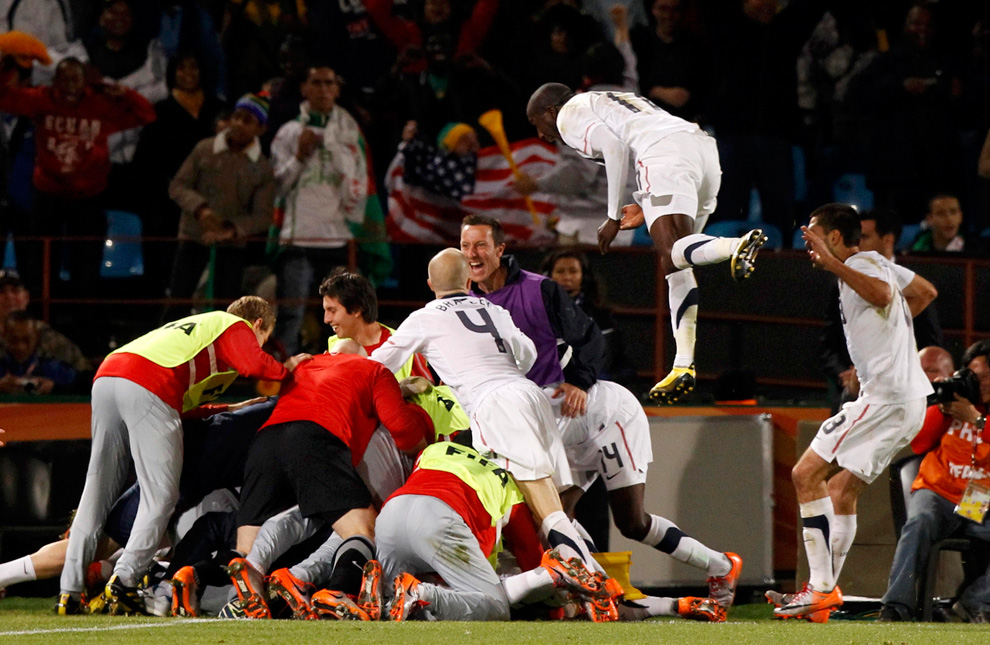For the last 20 years, the CONCACAF region has been owned by the Untied States and Mexico. When discussing the best teams in the region, those two are in a class of their own. Even though the two teams haven’t met in a Gold Cup final since 2011, it still comes as a surprise when one of the two doesn’t make the final.
Being the two biggest teams in CONCACAF, the two squads meet pretty often, not just in competitive matches but in many friendlies as well both countries are the best option are providing quality opposition for the other (oh and they can sell a ton of tickets). Whenever the two get together, even if it’s a friendly, you know you’re going to get an intense match with both teams wanting to come out on top.
The two teams appear to be almost completely even, the rivalry really hasn’t. Obviously in the early stages of the ‘rivalry’ Mexico was the dominant team, but that’s changed since the year 2000 where the US has put up a 13-7-5 record against their southern neighbors.
Those numbers are skewed a bit. Most of those games have been friendlies, where neither team were using their best players. In fact, despite Mexico getting just seven wins, they’ve arguably won the two most important matches between the two teams in the last five years – the 2011 Gold Cup and the 2015 CONCACAF Cup.
Despite all the big games played between the two teams, there are two games that are always more looked forward to then any others. The two matches that are played during the final round of CONCACAF’s World Cup qualifying. The one at the Azteca stadium in Mexico City, and the one in the United States, which for the past five instances has been played in Columbus. Ohio.
While these games are often looked forward to, they’ve also shown how one sided the rivalry was. Mexico would always win their home game at the Azteca, and the US would always win the game in Columbus by the score of 2-0.
That is until last Friday when Mexico earned a 2-1 win, their first World Cup qualifying win in the United States since the 70s.
There’s a simple explanation as to why each team was able to dominate their home World Cup qualifying match up until Friday and it can be summed up in one word: climate.
The climate and conditions of each stadium gave the home team a distinct advantage. The combination of the Azteca Stadium’s elevation and the smog of Mexico City make breathing a burden for visiting teams. Mexico is used to it, and that advantage has helped them turn Azteca into a fortress. Similarly the US was able to turn Columbus into a haven against Mexico for a similar reason. Columbus is a northern city and World Cup qualifying generally takes place in the winter. It gets cold in Columbus and that’s something that doesn’t usually suit Mexico, which is a very warm country.
But that is no longer the case.
The cold didn’t hurt Mexico on Friday night, and that shouldn’t be all that surprising because unlike in previous years, many of Mexico’s players are no longer based in Mexico. Now more than ever, Mexico has players who aren’t playing for Mexican clubs but are playing for clubs in Europe, where it gets cold in the winter.
In 2013, Mexico had six players on their 23 man roster who played for clubs outside of Mexico. On Friday night, they had 14.
The US has lost their mental edge that they had over Mexico in Columbus that’s nothing to worry about because the same thing has already happened for the US at the Azteca.
In 2012, the United States got their first ever win at the Azteca in a friendly. The following year they earned their first ever point in Mexico in a World Cup qualifying match.
But it’s not just the United States that have broken through. Azteca isn’t the fortress for Mexico that it once was. During qualification for the 2014 World Cup Mexico won just one of their games at the Azteca.
The question is, was that a fluke or a sign of things to come? The answer is more likely the latter than the former, for a very simple reason. Mexico rarely plays at the Azteca these days. Since the 2014 World Cup, other than their three home World Cup qualifiers in the semifinal round, Mexico hasn’t played a single game at their famed stadium.
Since the 2010 World Cup, you’re far more likely to see an El Tri friendly in the United States than one in Mexico. In the past six years, Mexico has played 29 friendlies in the United States, compared to just two at the Azteca Stadium. The result of that is that the altitude and air quality now has just as much of an effect on the Mexican players as it does on their opponents, making the United States trip to the Azteca in qualifying next summer look a whole lot less daunting.
The US-Mexico rivalry is about to go through some interesting changes. With both teams playing most of their games in the United States, home field advantage is not going to be a thing for either side.
Gone are the days where the away team is beaten before the match even starts simply because of where the game is being played. Welcome to the days where you have to bring it in every match, because who knows who’s gonna win.
This is going to be fun.






